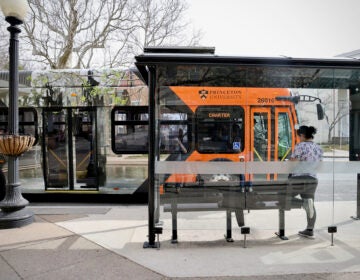New Jersey to eliminate inconsistencies in Sandy aid to towns
ListenMonths after an NJ Spotlight/WNYC investigation found that New Jersey had mishandled a Sandy energy grant program for towns and cities, the state is correcting its mistakes. According to revisions announced late last week, dozens of municipalities will now receive additional funding, while others will see their aid money reduced.
It’s unclear if all the problems uncovered in NJ Spotlight’s original analysis have now been fixed, since state officials have yet to provide access to their revised score sheets. But the announcement has been welcomed by Sandy-affected communities that were originally told they’d get much less.
The FEMA Hazard Mitigation Grant Program Energy Allocation Initiative is a $25 million dollar fund to help New Jersey towns and cities install backup power to be more resilient to future storms. It was at the heart of Hoboken Mayor Dawn Zimmer’s claim that her city had been shortchanged Sandy aid.
Based on a thorough review of the internal scoring spreadsheet the Christie administration used to conduct its rankings — which was obtained by the New Jersey chapter of Public Employees for Environmental Responsibility (PEER) and shared with NJ Spotlight reporting partner WNYC/NJ Public Radio — NJ Spotlight determined that dozens of towns and cities had been awarded hundreds of thousands of dollars more or less than they should have, according to the state’s own scoring criteria. Among the irregularities, Atlantic City and Belmar — which sustained substantial flooding in some neighborhoods — applied for grant money but didn’t receive any funding at all.
Meanwhile, dozens of towns that had comparatively little flooding history were allocated much more than they should have.
The award decisions were based on a scoring methodology that assigned points based on a variety of factors, including the population of the municipality, its disaster history, and whether it had conducted an energy audit.
Confronted with the investigation’s findings, state officials pointed to “legitimate scoring errors” caused primarily by flaws in human data entry. None of the funding had been handed out at the time of the investigation, and the Christie administration pledged that any problems would be rectified before the process was complete.
As reported in April, the head of the cross-agency committee that oversaw the Energy Allocation Initiative told lawyers conducting an internal administration review of the Bridgegate scandal that the Governor’s Office of Recovery and Rebuilding had asked his group to conduct a thorough review of the program in response to “media coverage about potential errors.” The committee’s findings not only confirmed NJ Spotlight’s original analysis, but indicated that the errors were even deeper and wide-ranging than originally reported.
It was determined that approximately 550 requests for backup generators had been inappropriately entered into the state’s computer system. As a result, state officials were forced to restart the scoring process from scratch, handwriting new tracking numbers on each paper grant application, along with detailed explanations of their scoring methodology. They also put their initials next to each score, indicating their approval, the memo said.
Now, after months of delays, the NJ Office of Emergency Management has finally released on its website a thoroughly revised list of award allocations, along with a detailed explanation of the “quality control process” it says was conducted behind the scenes. Data was entered “with extreme caution,” the document says, with staff double-checking for errors and auditing randomly selected samples.
Among the changes noted, Hoboken and Jersey City will see their allocations increase by around $100,000 to max out at $250,000, the most that any municipality can now receive through the program. Atlantic City will also now receive the maximum amount, and Belmar will receive $100,000, despite being told it wouldn’t get anything when the awards were originally announced.
“We are pleased that the State reevaluated their scoring metrics based on reported flaws, which has led to Jersey City receiving the maximum allocation of funding for hazard mitigation,” said Mayor Steven Fulop. “Jersey City was significantly impacted by Hurricane Sandy, and this funding will assist us as we work to make our city infrastructure more resilient.”
Hoboken Mayor Dawn Zimmer was also happy to hear the news.
“The mistakes that were made would never have been rectified if not for the investigative journalism of NJ Spotlight,” she said in a statement. “On behalf of the residents of Hoboken, I thank NJ Spotlight and the State of New Jersey for making the necessary corrections so that at the end of the day, the federal funds will be distributed in a fair and appropriate manner.”
After being originally denied funding, Belmar was able to secure backup generators on its own from army surplus. But Mayor Matt Doherty said his borough can still make good use of this money to purchase transfer switches to hook up the generators to public buildings.
With grant money now capped at $250,000 through the revised scoring methodology, it’s a different story for towns and cities that had originally been notified they would receive much more. Newark will see its allocation slashed from $825,000, and Elizabeth will also get much less than the $639,000 it was originally expecting. Officials in those cities did not respond to calls and emails seeking comment.
Other places like Nutley and Morristown originally received sizeable awards, even though NJ Spotlight’s analysis found that none of their requests should have been approved if the scoring had been done properly. Their funding will now be substantially reduced.
It’s not being cut entirely, however. As an apparent consolation prize to municipalities who’ve seen their original allocations eliminated – and to satisfy the overwhelming demand for energy-resilience funding — the state has also announced a new $13 million bank of hazard mitigation grants for applicants who didn’t earn quite enough points to qualify for funding the first time around. The money is targeted at backup generators for “critical lifeline and life-safety facilities,” including police and fire stations, shelters, emergency operations centers, water supply facilities, and wastewater treatment plants.
Altogether, over 300 county and municipal applicants will receive funding for backup generators through one of the two grant programs. State officials must now submit the grant requests to FEMA for final approval.
_________________________________________
NJ Spotlight, an independent online news service on issues critical to New Jersey, makes its in-depth reporting available to NewsWorks.
WHYY is your source for fact-based, in-depth journalism and information. As a nonprofit organization, we rely on financial support from readers like you. Please give today.
















